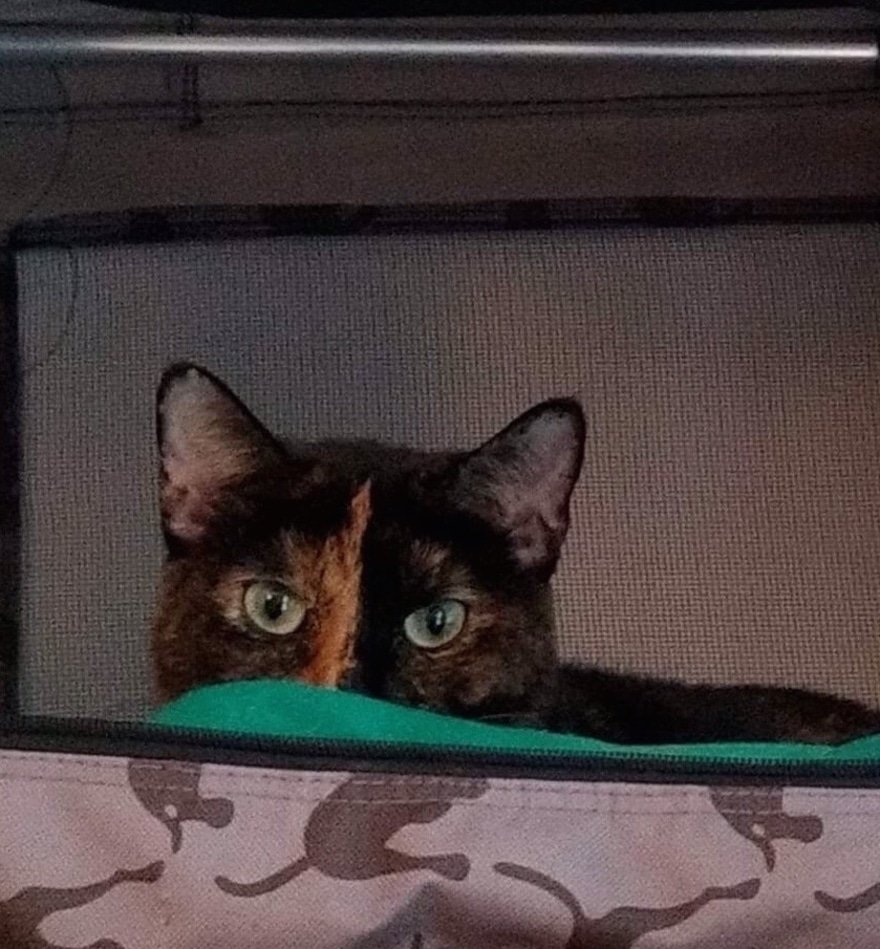Teaching the way dogs learn
It all seemed perfectly straightforward. Olive the rescue Yorkie, with whose family I’d already done a full consultation – there will be more about these excellent folk in another post – likes seeking out small spaces to snuggle down in, so I dropped by with a selection of portable “safe spaces” to see if she responded to any of them.
She did, but this post is not about Olive. The session was ultimately not, for the most part, about Olive. It was about someone else. Someone my anthropocentric and canicentric mind had barely registered.
As soon as I laid out the “safe space” options on the floor and stepped back to give Olive room to assess them, the real hero of this story made her entrance.
Stevie the cat.
Stevie breezed past Olive, hopped into a fabric crate, and made herself completely at home. She lay down. She rolled on her back and batted the zip tags. She scent-marked the blankets. Olive’s approach was greeted with a hiss. The two get on well, but this was Stevie’s space now.
As we encouraged Olive away into the bedroom, I got a bit more information about our new feline teacher.
As a kitten Stevie lived in a very different home where, adorable ball of fluff that she was, she got handled endlessly, indiscriminately, and without respect. As an adult she now reacts strongly against intrusions on her personal space and does not tolerate any physical contact she hasn’t explicitly initiated – as is her right as a sentient being. It made absolute sense that she might need a space of her very own where her privacy would be assured.
We had been entirely focused on Olive’s needs – as a nervous recent rescue joining a family that also contains ebullient collie-whippet cross Lady, we had concentrated on ways to help her feel safe and secure and allow her confidence to grow while she integrated successfully with her new canine sibling. In claiming that space Stevie reminded us that she, too, was part of the family, and that perhaps her needs had taken a back seat. So this time we talked about Stevie. Where she liked to relax, what kinds of environmental enrichment she might enjoy, whether she had shown interest in any of the activities and games the humans and dogs were doing together. When she eventually came out to find out what we were all up to, we put her crate in her favourite spot with plans in place to customise it according to her tastes. As far as I know, she’s still there.
Very few interactions with animals, be they training sessions, behavioural observations or purely socialising, go the way we plan. Good planning is vital, of course – without it we cannot set up our non-human learners for success or be ready to mark and reward that success when it comes. There is, however, a time for going off-script and following where they lead. Training and living with other species is an ongoing communication in which humans must be prepared to listen as well as to speak, to learn as well as to teach.
Olive confounded my expectations by plumping for a very traditional metal crate, with two sides open, lined with Vetbed. Apparently it’s cosier than it looks.
